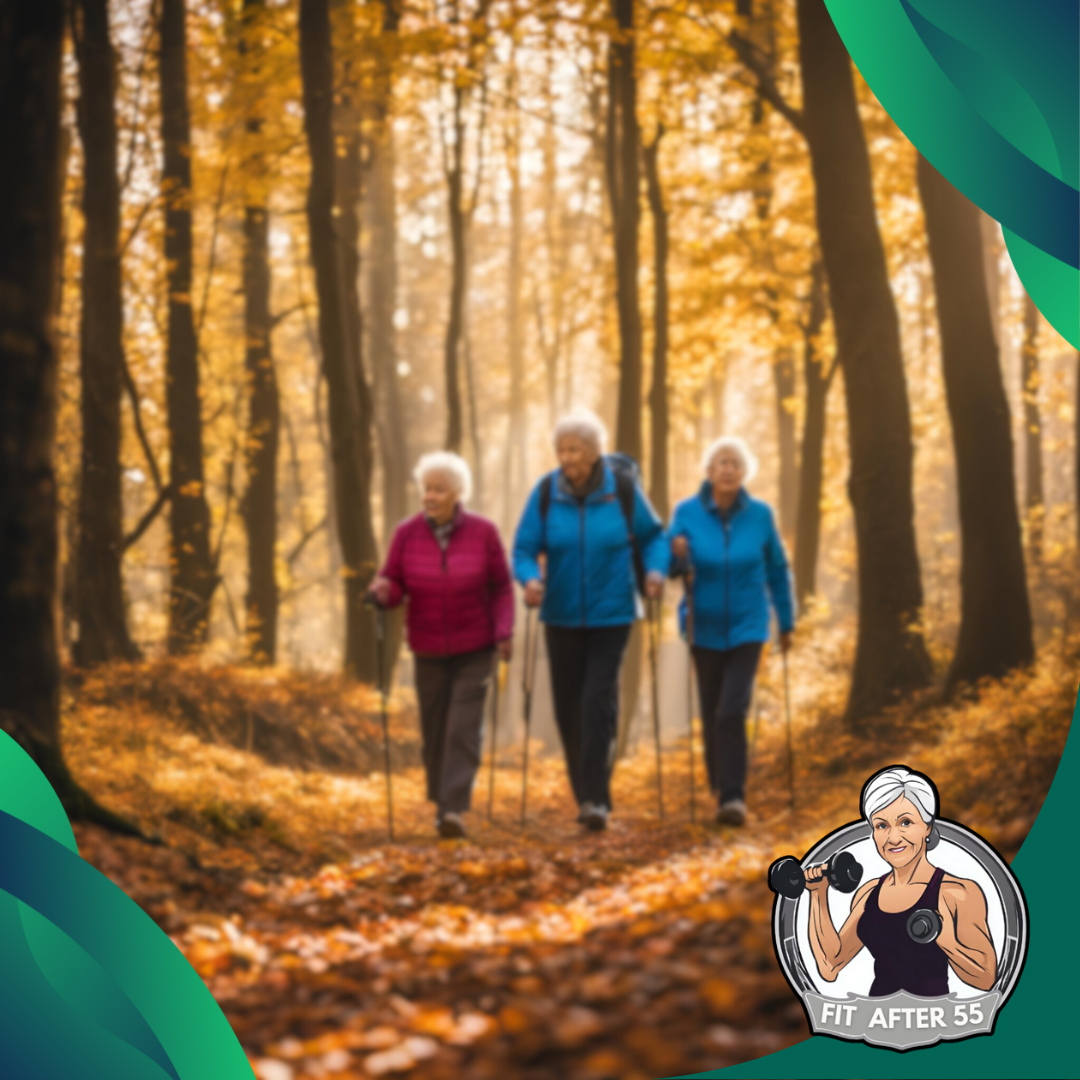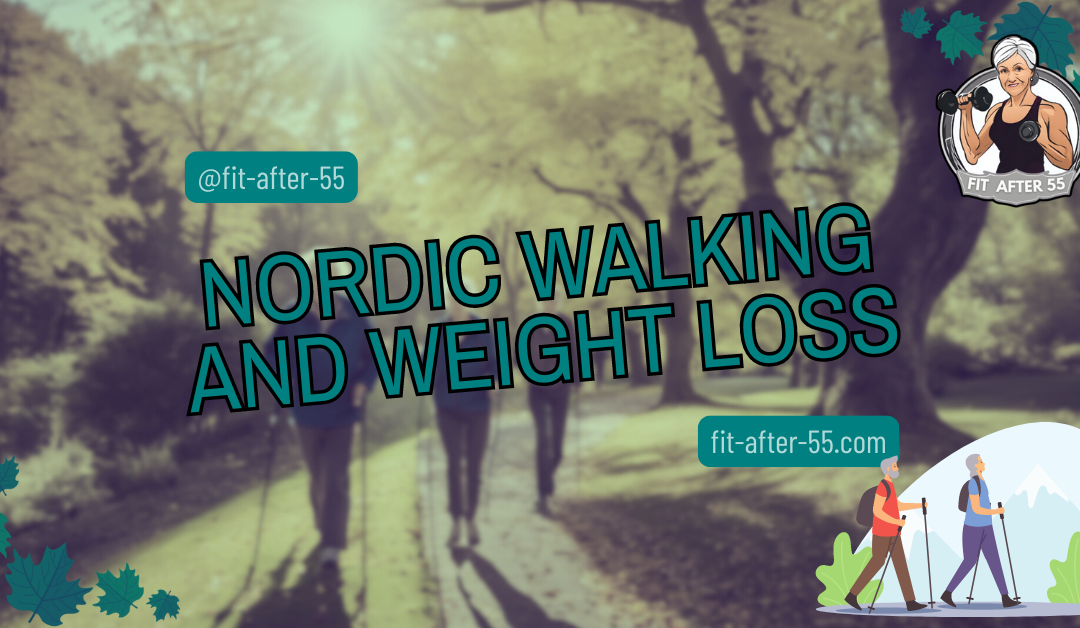Are you searching for an exercise that combines effective weight loss with an enjoyable activity? Nordic walking might be the perfect solution. This unique workout method merges the simplicity of walking with the added intensity of using specially designed poles. By incorporating your upper body into the motion, Nordic walking enhances your calorie burn and boosts cardiovascular fitness, making it a powerful tool for weight loss. Nordic walking and weight loss go hand in hand, offering a comprehensive approach to achieving your fitness goals.
This article will reveal how Nordic walking can transform your fitness routine and help you achieve your weight loss goals. Discover practical tips for getting started, the benefits of this low-impact exercise, and how you can integrate it into your daily life for maximum results. Join us on this journey to uncover how Nordic walking can become a key player in your path to a healthier, more active lifestyle.
Nordic Walking and Weight Loss: Unlocking Fitness Gains with Pole Walking

Nordic Walking is an exercise originated in Finland as a summer training method for cross-country skiers. It has gained popularity worldwide as a comprehensive workout. Unlike traditional walking, Nordic Walking involves the use of specially designed poles. These poles engage the upper body and provide propulsion. With the additional muscle groups in play, this exercise improves cardiovascular health and offers a higher calorie burn compared to conventional walking.
Weight management becomes more efficient with Nordic Walking as it blends low-impact aerobic activity with resistance training. When performed regularly, this combination can lead to more significant weight loss and improved body composition. It is a suitable activity for people of all ages and fitness levels, contributing to weight loss and overall well-being. By adhering to a consistent Nordic Walking routine and complementary nutritional strategies, individuals can expect positive weight and physical fitness changes.
Key Takeaways
- Nordic Walking engages more muscles than traditional walking, leading to increased calorie burn.
- Regular Nordic Walking can contribute to significant weight loss and improved body composition.
- Combining this exercise with proper nutrition enhances overall health and fitness outcomes.
Basics of Nordic Walking
Nordic walking is a low-impact, full-body exercise that enhances regular walking with specialized poles, making it an excellent choice for those interested in Nordic walking and weight loss. This beneficial activity engages various muscle groups, facilitating a comprehensive workout that can significantly contribute to your weight loss goals.

Origins and Evolution of Nordic Walking
Nordic walking originated from cross-country skiing as a summer training method for skiers. It has since evolved into a recognized fitness activity providing high-level cardio benefits and minimal joint stress.
Equipment and Gear Essentials
Nordic walking requires designed poles with angled tips to push against the ground. Selecting the correct size based on your height is crucial for effectiveness. Wear comfortable, supportive footwear and dress appropriately for varying weather conditions.
Technique and Posture Fundamentals
Proper technique is essential in Nordic walking to maximize workout benefits:
- Hold your poles at a 45-degree angle to the ground, with straps secured.
- Walk naturally with a straight back and engaged core.
- Coordinate the pole plant with the opposite foot’s foot’s.
- Pole tips should land behind the body to push you forward.
Benefits of Nordic Walking for Weight Loss

Nordic walking is an engaging full-body workout that can significantly enhance your weight loss efforts. With Nordic walking and weight loss, you utilize poles to involve more muscle groups than traditional walking, leading to higher caloric burn and better cardiovascular health.
Caloric Expenditure in Nordic Walking
During Nordic walking, you can expect an increase in caloric expenditure. On average, you burn more calories than when walking regularly due to the added resistance from the poles. Studies imply that Nordic walking can boost calorie burning by 18% to 67%, depending on your intensity and technique.
Comparison to Traditional Walking
Compared to traditional walking, Nordic walking typically results in greater calorie burn and muscle engagement. The added upper body movement increases the workload, contributing to a more substantial energy expenditure, which benefits weight loss.
Impact on Metabolism
Engaging in Nordic walking can lead to an increase in your metabolic rate. By targeting over 90% of your body’s body, the activity enhances muscle mass, which can increase resting metabolism. This means you must burn more calories even at rest, aiding in more effective weight control.
Here’s a video that highlights the benefits of Nordic walking.
By: Margaret Martin, Physical Therapist
Designing a Nordic Walking Program
A structured Nordic Walking program tailored to individual needs and goals is essential to manage weight loss effectively. This program should focus on achievable milestones, a personalized walking schedule, and varied training intensities.
Setting Realistic Weight Loss Goals
Begin with setting clear and attainable weight loss targets. A systematic review suggests a dose-response relationship for weight loss, indicating that over 150 minutes of physical activity per week can lead to moderate weight loss, and 225-420 minutes can result in more significant weight loss. Keep these figures in mind when formulating your goals.
Creating a Personalized Nordic Walking Plan
Your Nordic Walking routine should fit into your weekly schedule with ease. To promote weight loss, engaging in Nordic Walking 4-5 times per week for at least 60 minutes per session is recommended. Personal preferences and commitments should dictate the exact days and times. Consider research guidelines for frequency and duration to optimize your plan.
Incorporating Interval Training
To maximize calorie burn, introduce interval training into your Nordic Walking sessions. Alternate brisk walking and a more relaxed pace to challenge the body and increase fitness levels. This approach has been recognized as an effective way to involve obese individuals in physical activity and support weight loss.

Did you Know?
According to research, for optimal results, you should aim for Nordic Walking 4-5 times per week for at least 60 minutes per session, potentially with additional diet control. For enhanced weight loss, high-frequency supervised sessions are highly beneficial.
Nutritional Considerations

When incorporating Nordic Walking and weight loss into your fitness plan, tailoring your diet for optimal energy and recovery is vital. A carefully chosen diet enhances the benefits of Nordic Walking and weight loss, ensuring that you maximize the effectiveness of your physical routine.
Balanced Diet for Active Lifestyles
Your diet should consist of various food groups to support an active lifestyle with Nordic Walking. Carbohydrates are crucial for energy, so include whole grains such as brown rice and oatmeal. Proteins are necessary for muscle repair, so lean meats, beans, and tofu should be regulars on your plate. Don’t front fruits and vegetables for vitamins, minerals, and healthy fats like avocados and nuts. Example of a Balanced Daily Meal Plan:
- Breakfast: Oatmeal with berries and a spoonful of almond butter.
- Lunch: Quinoa salad with mixed greens, chickpeas, and a lemon vinaigrette.
- Dinner: Grilled chicken, roasted sweet potatoes, and steamed broccoli.
- Snacks: Greek yogurt, an apple, or raw almonds.
Hydration and Performance
Staying hydrated is essential for optimum performance during Nordic walking. Water regulates body temperature, lubricates joints, and helps transport nutrients for energy and health. Aim for at least eight glasses (64 ounces) of water daily, adjusting for exercise intensity and weather conditions to prevent dehydration. Fluid Intake Guidelines:
- Before walking: Drink 17-20 ounces of water 2-3 hours prior.
- During walking: Sip 7-10 ounces of water every 10-20 minutes.
- Post-walking: Drink 16-24 ounces of water for every pound lost during activity.
Supplements and Weight Loss
While a balanced diet is typically sufficient, in some cases, supplements may be beneficial. However, they are solutions for weight loss and should be used judiciously. If you’re seeking supplements, discussing them with a healthcare provider is best.
Potentially beneficial supplements include protein powders to aid muscle recovery or omega-3 fatty acids, which can support heart health. Products like protein powders have been recognized for supporting muscle recovery when participating in exercise programs like Nordic walking. Remember that real food should always be your primary source of nutrients.
Nordic Walking and Weight Loss: Tracking Progress and Adjustments

When embarking on a Nordic Walking regimen for weight loss, consistently tracking and fine-tuning your approach is paramount to ensure ongoing progress.
Monitoring Weight Loss
To effectively monitor your weight loss, establish a routine of weighing yourself at the same time each week. Use a log or an app to record your weight and the duration and intensity of your Nordic Walking sessions. This will help you visualize your progress and maintain motivation.
Adjusting Intensity and Duration
If your weight loss plateaus or your routine becomes too easy, consider increasing the intensity or duration of your Nordic Walking sessions.
Overcoming Plateaus
Weight loss plateaus are a common challenge. If you hit a stall in your progress:
- Evaluate your dietary habits and ensure they align with your weight loss goals.
- Vary your Nordic Walking routine by adding intervals or incorporating different terrains.
- Cross-train with other forms of exercise to keep your body adapting and improving.
Safety and Injury Prevention
Nordic walking is a beneficial form of exercise that not only aids in weight management but also improves overall fitness, making it an excellent choice for those interested in Nordic walking and weight loss. To ensure a safe experience, it is important to understand common injuries associated with Nordic walking, apply correct warm-up and cool-down techniques, and pay attention to your body’s body.
Common Injuries and How to Avoid Them
Strains and Sprains: These often result from improper use of poles or overexertion. To prevent them:
- Use poles correctly to support your movement by keeping them close to your body and behind you.
- Gradually increase the intensity, and don’t do it, especially if you’re Nordic walking.
Joint Pain can occur when excessive stress is applied to the knees and ankles. To prevent it:
- Invest in shoes with good shock absorption to support your joints.
- Walk on even terrain to reduce the impact on your joints.
Proper Warm-Up and Cool-Down Techniques
- Warm-Up: A proper warm-up prepares your muscles for the exercise ahead. Stretch and focus on your legs, arms, and back. Start slowly with a gentle walk, then introduce the poles.
- Cool-Down: Cooling down helps to lower your heart rate gradually. Continue walking and slow your pace towards the end of your session. Stretch again to relax in the same areas you warmed up.
Listening to Your Body
Understanding your limits is crucial. If you experience discomfort or Pain:
- Stop and rest if you feel exhausted.
- Seek medical attention for any sharp or persistent pain.
Community and Support

When embarking on a weight loss journey with Nordic Walking and weight loss, surrounding yourself with a support network can make a significant difference. From finding fellow walkers to leveraging technology, these community aspects can help sustain motivation and commitment to your goals.
Finding Walking Groups and Partners
Joining a Nordic Walking group or finding a walking partner can boost your accountability and provide a social outlet that makes exercising more enjoyable. Many local fitness clubs and community centers offer walking groups, which also present an opportunity to share tips and progress. Websites dedicated to Nordic Walking can be valuable resources for locating groups in your area.
Role of Social Support in Weight Management
Having social support can enhance your weight loss efforts. This support comes in many forms: encouragement, accountability, and even friendly competition. Friends and family can be a part of your support system, offering motivation and understanding when faced with challenges. Social reinforcements help maintain a routine, which is crucial for long-term success.
Using Technology and Apps for Motivation
With the advent of smartphones, fitness apps have become a reliable tool. Many apps track your Nordic Walking sessions. They also allow you to set goals, view achievements, and connect with online communities doing the same activity. Information from credible sources, such as Nordic Walking Nations, can be accessed at your fingertips. This provides a wealth of knowledge and support.
Long-Term Commitment to Nordic Walking

Adopting Nordic walking as a part of your routine requires a steadfast commitment to Nordic walking and weight loss. This dedication ensures you maintain your weight loss goals and enhance your overall well-being. Embrace habits that integrate this activity into your lifestyle, ensuring longevity amidst life’s changes.
Maintaining Motivation
Set clear, attainable goals and track your progress to stay motivated with your Nordic walking. The achievement you experience when reaching milestones will encourage you to continue. Joining walking groups or finding a walking buddy can provide social support. This makes the experience more enjoyable and sustainable.
Lifestyle Integration for Sustained Weight Loss
Incorporating Nordic walking into your daily routine ensures it becomes a long-term lifestyle change rather than a fleeting phase. Choose to walk to nearby destinations instead of driving, or set aside specific days and times for your walks. Consistency is critical for sustained weight loss. Experts suggest a frequency of 4-5 weekly sessions, each lasting at least 60 minutes. This should be combined with diet control.
Adapting to Life Changes
Life can be unpredictable, and your ability to adapt your Nordic walking routine to changing circumstances is crucial. Whether facing time constraints or physical limitations, modify the intensity and duration of your walks as needed. Utilize tools like walking apps or diary logs to adjust your goals and keep track of changes. This ensures that Nordic walking is a beneficial part of your life through all seasons.
Embrace Nordic Walking: A Sustainable Path to Weight Loss and Fitness
Nordic walking proves to be a highly effective and engaging exercise for those committed to weight loss and overall fitness. By integrating this full-body workout into your routine, you not only enhance your calorie burn but also improve cardiovascular health, all while enjoying a low-impact activity. With its roots in cross-country skiing and its proven benefits for weight management, Nordic walking stands out as a comprehensive solution for those seeking to achieve and maintain their fitness goals.

By adopting Nordic walking and making it a consistent part of your lifestyle, you set yourself up for long-term success. Embrace this dynamic exercise, stay committed to your routine, and combine it with a balanced diet for optimal results. Whether starting or looking to enhance your current regimen, Nordic walking offers a path to a healthier, more active life, helping you step confidently towards your weight loss goals.
Frequently Asked Questions
How Effective is Nordic Walking for Weight Loss Compared to Other Forms of Exercise?
Nordic walking can be an effective exercise for weight loss, potentially more so than traditional walking due to the additional muscle groups engaged. It is comparable to activities like jogging in terms of calorie expenditure as long as it is performed at a suitable intensity.
What Are the Benefits and Drawbacks of Incorporating Nordic Walking Into a Fitness Routine?
Incorporating Nordic walking into your fitness routine can provide a full-body workout, engaging up to 90% of your muscles. However, it requires proper technique and walking poles, which may present a learning curve and require an initial investment.
Can Seniors Safely Participate in Nordic Walking, and What Modifications May Be Necessary?
Seniors can safely participate in Nordic walking, often with few necessary modifications. Proper pole length and walking pace adjustments will accommodate individual fitness levels and mobility.
Join Us at 55: Embrace Wellness and Stay Active!
Become a member of the Fit After 55 community and ignite your motivation to stay active.
Visit our website for specialized tips, insightful advice, and reviews crafted just for seniors. Engage with our encouraging health and fitness network on our Facebook page.
Together, let’s embark on this fitness adventure and demonstrate that age is merely a number!

